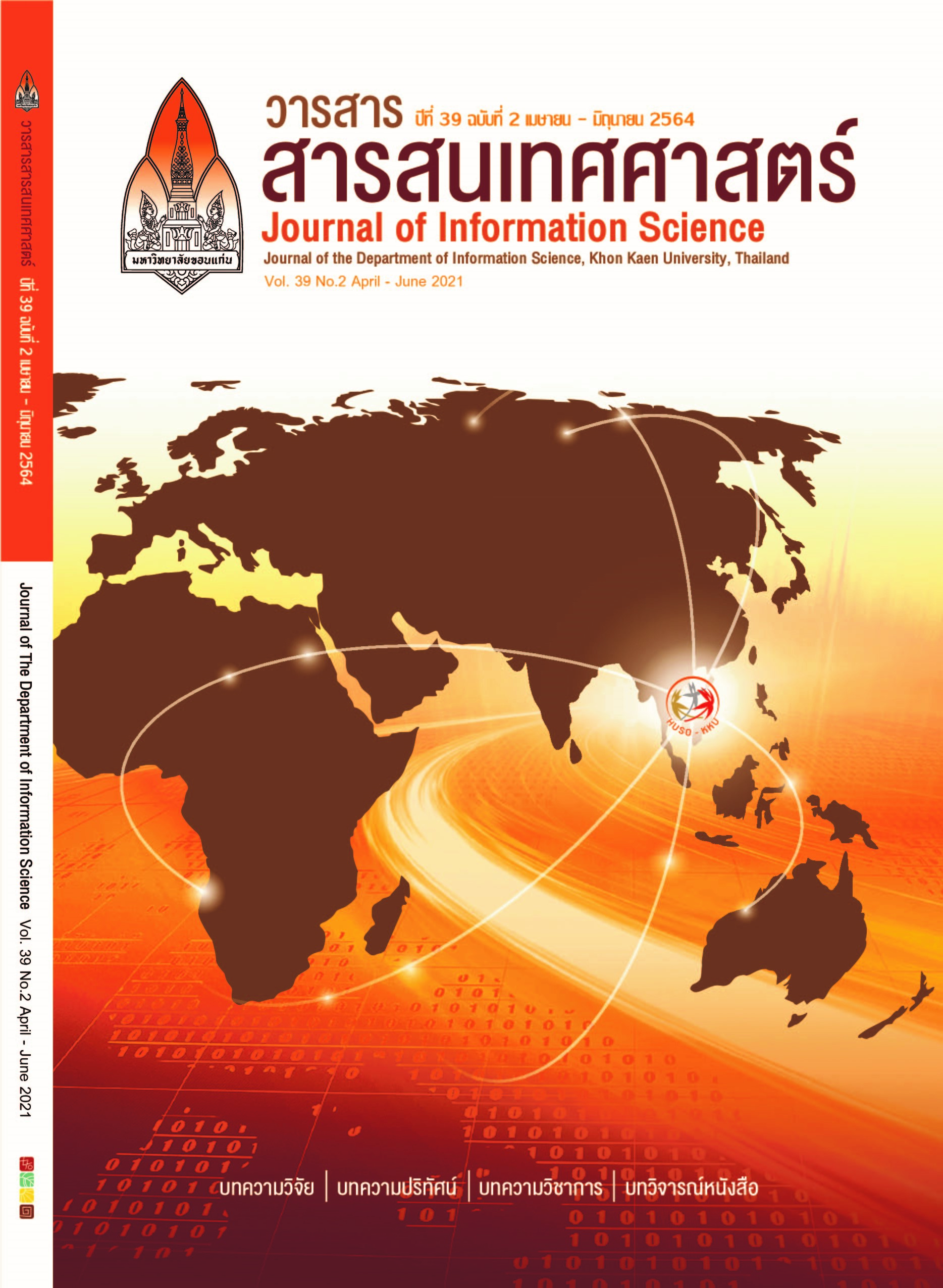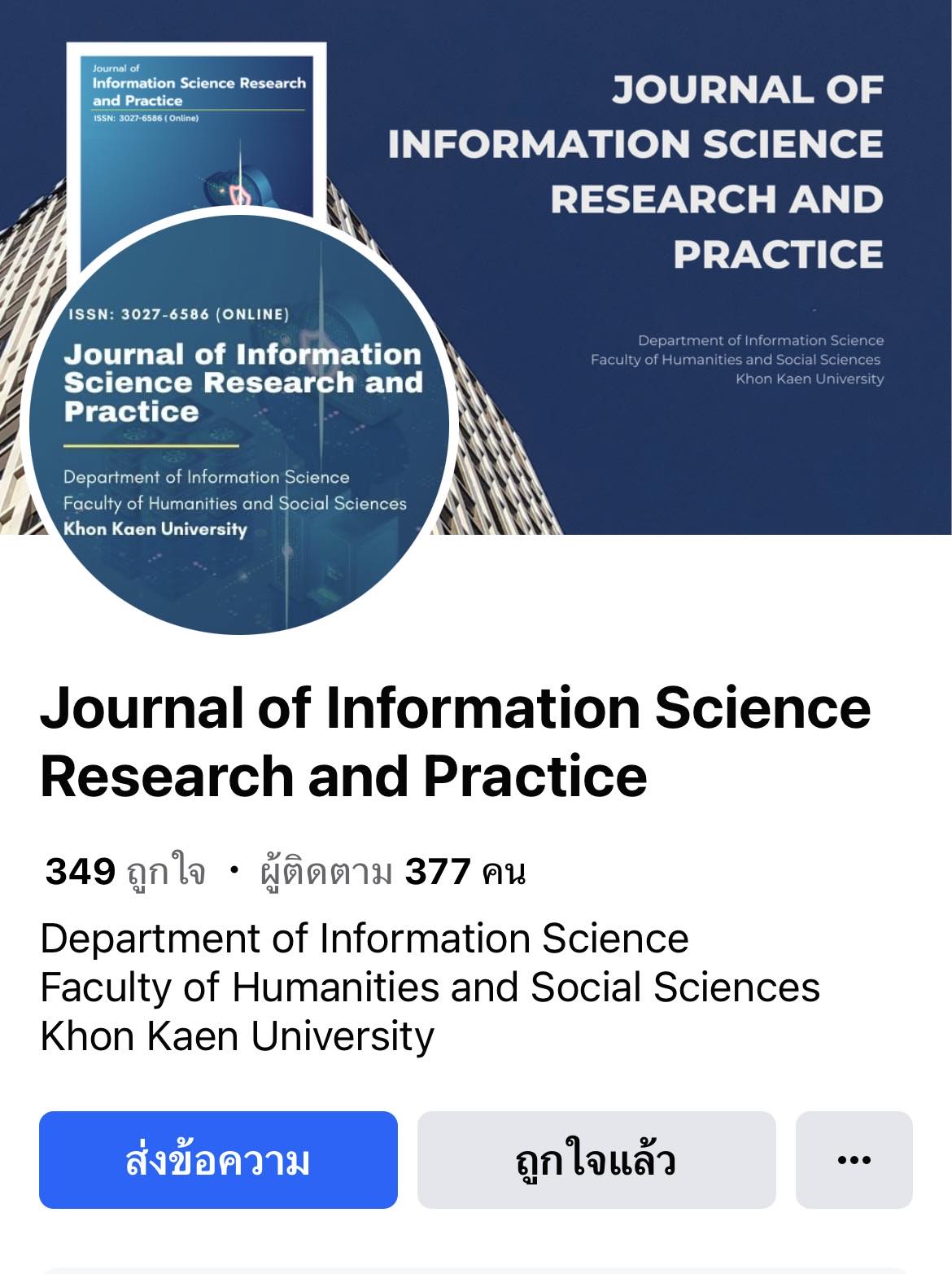Lessons Learned from the End: The Case Study of SAC’s Research Database at the Princess Maha Chakri Sirindhorn Anthropology Centre
DOI:
https://doi.org/10.14456/jiskku.2021.11Keywords:
Digital curation, Metadata, Databases, Institutional repositoriesAbstract
This article describes awareness and experiences of lessons learned from the design and development of the database of Princess Maha Chakri Sirindhorn (SAC) Anthropology Research Centre. The paper is divided into 4 parts. Part one provides the historical background and management of the SAC and its database development. Part 2 points out the problems encountered while conducting survey and registering research documents for its database development. Part 3 describes requirements and concepts for designing the database. Part 4 analyzes and discusses the problems and provides recommendations for solving them.
Downloads
References
DCMI. (2005). Using Dublin Core - Dublin Core qualifiers. Retrieved 17 April 2018, from http://www.dublincore.org/documents/usageguide/qualifiers/
Princess Maha Chakri Sirindhorn Anthropology. (2019). Museums in Thailand. Retrieved 17 March 2019, from https://db.sac.or.th/museum/magazine/book
Rungcharoensuksri. S. (2016). Guideline of data repository management. (In Thai). Retrieved 22 May 2019, from https://www.sac.or.th /main/th/contents/index/176
Rungcharoensuksri, S. (2018a). 1st meeting minute: Studies and development project of database of research of The Princess Maha Chakri Sirindhorn Anthropology Centre. (In Thai). Bangkok: The Princess Maha Chakri Sirindhorn Anthropology Centre.
Rungcharoensuksri, S. (2018b). 2nd meeting minute: Studies and development project of database of research of The Princess Maha Chakri Sirindhorn Anthropology Centre. (In Thai). Bangkok: The Princess Maha Chakri Sirindhorn Anthropology Centre.
Rungcharoensuksri. S. (2019a). Database structure. (In Thai). Retrieved 15 May 2019, from http://www.sac.or.th/databases/sac-research/structure.php
Rungcharoensuksri, S. (2019b). The procedures of developing research database. (In Thai). Retrieved 15 May 2019, from http://www.sac.or.th/databases/sac-research/process.php
Sabharwal, A. (2015). Digital curation lifecycle in practice. Digital Curation in the Digital Humanities, 95–108. Retrieved from https://doi.org/10.1016/b978-0-08-100143-1.00005-2
Schöpfel, J. (2010). Towards a Prague definition of grey literature. In Twelfth International Conference on Grey Literature (Eds.), Transparency in Grey Literature. (pp. 11–26). Prague, Czech. Retrieved from https://archivesic.ccsd.cnrs.fr/sic_00581570/document
Suber, P. (2013). Open access (The MIT Press Essential Knowledge Series). The Australian Library Journal (62). Retrieved from https://doi.org/10.1080/00049670.2013.811775
University of Reading. (2019). Citing references. Retrieved 29 June 2019, from https://libguides.reading.ac.uk/citing-references/referencingstyles#s-lg-box-9973347
Wichian, S. (2015). Grey literature in a digital age. (In Thai). Journal of Information Science, 33(1), 123-141. Retrieved from https://www.tci- thaijo.org/index.php/jiskku/article/ view/42503/35131
Wilkinson, M. D., Dumontier, M., Aalbersberg, Ij. J., Appleton, G., Axton, M., Baak, A., … Mons, B. (2016). The FAIR guiding principles for scientific data management and stewardship. The Nature, 3(160018), 1–9. Retrieved from https://doi.org/10.1038/sdata.2016.18








